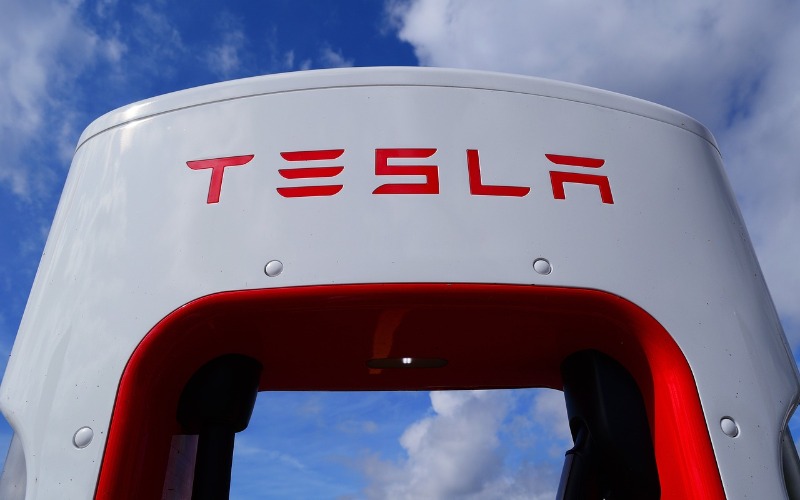We must find a way to remove 6-10 billion of CO2 a year to reach our net zero goal by 2050. While carbon capture technologies have been criticized in the past, that objective is very much about reducing emissions as well as removing CO2 from the atmosphere. The key question then becomes, how do we find a viable, scalable way to do the latter?
The carbon capture industry often looks to the renewable energy sector for inspiration on scaling technologies. But I think we can learn from an unexpected place: Tesla’s approach to electric vehicle manufacturing. That’s because when I look at scaling carbon capture technology, I see striking parallels to Tesla’s early production lines.
Battery Production Principles Applied to Carbon Capture Facilities
Take Tesla’s approach to batteries: in their car, they have an 80 kilowatt-hour battery. But it’s not a single battery: it’s built from 5000 small batteries.
When we build carbon capture facilities, we’ll follow a similar principle. It won’t be one device, but thousands of them working together.
For those of us developing electrochemical carbon capture, the similarities to battery production run even deeper. We’re looking at comparable base materials, manufacturing methods, and system management approaches. The way we’ll manage our systems mirrors battery management systems (BMS) – controlling each cell and maximizing lifetime efficiency.
A Bigger Challenge—Which Tesla’s Modularity Can Help Us Solve
But we face a steeper challenge than Tesla did. When Tesla started, they teamed with LG and licensed their battery technology. We don’t have that luxury – we need to develop our carbon capture “battery” from scratch before we can scale it up. Our challenge is bigger, and we need to move even faster to make a real impact on climate change.
A modular approach offers us clear advantages. By using standardized components, we can scale gradually based on demand rather than building massive facilities up front. For instance, we could use a big area in the desert to install direct air capture alongside renewables. We don’t have to build for 1 million tons immediately, we can start by selling initial carbon credits and expand as demand grows.
This scalability is crucial when you look at the numbers. We’re facing 40-50 gigatons of emissions annually. The oil companies aren’t going to stop using oil and gas, no chance of that. So without effective carbon capture at a massive scale, those emissions will continue. That’s why the manufacturing approach matters so much: we need solutions that can match the scale of the problem.
A Surprising Weapon: Flat Material Manufacturing
Manufacturing-wise, we’re building on proven capabilities. One thing humans know how to do really well is manufacture sheets. It’s why battery prices keep dropping, why solar gets cheaper: we excel at making flat materials at scale and speed. This expertise will be crucial for scaling up carbon capture.
Think about existing supply chains we can leverage. Water desalination already uses membrane materials and ionic materials similar to what we need. The roll-to-sheet production processes are well established. We don’t need to reinvent manufacturing, we need to adapt proven methods to our specific requirements.
Breaking the $1,000 per Ton Barrier
The market dynamics, however, present unique challenges. Right now, tech giants like Microsoft and Google can afford to pay $1,000 per ton of CO2 because they’re environmentally responsible and can absorb the cost. But to deploy at a meaningful scale, we need to get down to $100 per ton or less. We need long-term commitments too: 10-15 year contracts that allow us to amortize costs effectively.
The efficiency equation is critical here. The most important factor in direct air capture – in any carbon capture really – is energy intensity. Nobody wants to pay to waste energy capturing carbon. The more efficient we make it, the higher scale we can achieve. This drives everything from concept development to manufacturing methods.
Moving Faster Than Tesla—Because We Have To
The urgency of our mission is also exceeding even Tesla’s rapid scaling. Carbon capture will likely become an even bigger industry than automotive. The scale of the climate challenge demands rapid deployment and probably a new policy framework.
I’ve started thinking about it this way: carbon is basically garbage. You don’t throw garbage in your backyard; you put it in a bin and someone collects it.
CO2 emissions should be treated the same way.
I think success depends on both manufacturing innovation – particularly in sheet structure production – and market development through carbon credits or carbon taxes. We’ll also need to think about sustainability from day one in ways other industries haven’t. When people started making lithium-ion batteries, they weren’t worried about recycling them. Given the scale of direct air capture, we have to ensure everything is recyclable from the start, ideally at a lower cost than virgin materials.
Like Tesla, we face significant opposition and skepticism. But Tesla proved that with the right approach to manufacturing and steadfast focus on cost reduction, you can scale hardware solutions faster than anyone thought possible. Now it’s our turn to apply those lessons to cleaning our air, one module at a time.











